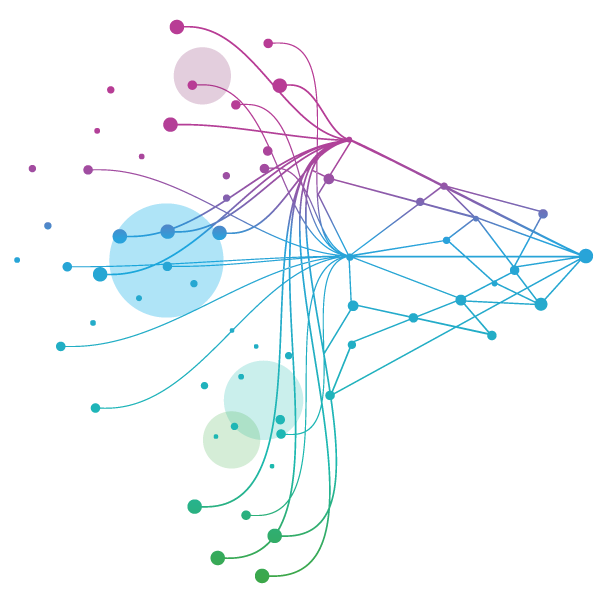Shape the future of consumer health.






















- Blogs
- Allergy Market 2025: Growth, Shifts and Evolving Dynamics
A turning point for the category
In the year to MAT Q2 2025, the global allergy market grew by +3.0%, with volume also returning to positive growth. This compares with just +0.8% in the year to MAT Q2 2024, showing that demand has picked up again after a flat year. Growth is back, but not in the same way as before. The drivers are shifting, reflecting differences between regions, seasons, and how consumers now manage allergy and respiratory symptoms.
Global growth back, but uneven
 Figure 1: Global Asthma & Anti-Allergics Performance: MAT Q2 2025. (Source: IQVIA Global OTC Insights; Value – LC$ MNF; IQVIA OTC Audited data)
Figure 1: Global Asthma & Anti-Allergics Performance: MAT Q2 2025. (Source: IQVIA Global OTC Insights; Value – LC$ MNF; IQVIA OTC Audited data)
Over the past four years, the allergy market has followed very different growth paths. In the year to MAT Q2 2022, value grew strongly at +13.6% as demand returned after the pandemic. Growth then slowed to +8.4% in 2023,before flattening at +0.8% in 2024.
The +3.0% rise in 2025 shows the market has regained momentum, though the pace is steadier.
This overall growth hides very different stories across regions.
Regional divergence defines 2025
In 2025, all regions except one returned to positive growth. The standouts were EMEA (+8.4%) and Latin America (+8.3%), comfortably outpacing the global average. APAC delivered solid growth of +4.7%, reinforcing its role as a consistent contributor. The clear outlier was North America, down –0.7%, despite being the largest market by value.
These differences highlight how the balance of growth is shifting. Markets that once set the pace are slowing, while others are accelerating. These regional contrasts were also reflected in seasonal trends..
The U.S.: early peaks, muted summer
In the U.S., the season started with sharp spring peaks across the Southeast and Midwest, pointing to strong early demand. Milder conditions in July then cut the season short, lowering pollen levels and limiting sales in the second half.
By year-end, incidence was –1.7% below 2024 and –3.0% below the three-year average. Local weather remains a decisive factor, and planning cannot rely on historic averages when incidence shifts so quickly.
The contrast with the UK season could not have been greater.
The UK: an extended season
In the UK, incidence peaked in spring as expected but pollen levels stayed high into the summer, extending the season longer than forecast. This meant consumers experienced symptoms for longer, while retailers and manufacturers had to keep supply and promotions in place beyond the usual window.
While seasons shaped short-term trends, structural changes such as Rx-to-OTC switches and product innovation also continued to influence category growth.
Rx-to-OTC: continuing the expansion of access
Rx-to-OTC activity in 2025 continued the steady broadening of self-care access seen in recent years.
In Europe, Viatris’ Dymista (azelastine + fluticasone) was reclassified to Pharmacy (P) status in the U.K. in July 2025, and subsequently approved for OTC sale in Germany in July 2025, building on earlier moves such as Sanofi’s fexofenadine (Allevia/Allegra) switch in the U.K. (2022) and bilastine in Germany (2023).
In the U.S., previous reclassifications included Pataday (olopatadine) in 2020, Astepro (azelastine) in 2021, and Nasonex 24HR (mometasone furoate) in 2022, expanding consumer choice. The FDA’s new ACNU rule, effective May 27, 2025, is expected to support further switches, providing a clearer pathway for future self-care options.
Overall, Rx-to-OTC developments are gradually widening access and strengthening the role of self-management in allergy care across major markets.
Innovation shapes the next phase of allergy care
Innovation across the allergy category continues to centre on speed, convenience, and symptom coverage, building on established molecule classes rather than introducing entirely new ones.
Bayer, Haleon, and Sanofi are driving progress in faster-acting antihistamines and dual-benefit combinations that target both nasal and eye symptoms. Combination nasal sprays—following the success of Viatris’ Dymista—remain a priority for line extensions and reformulations.
Elsewhere, companies such as UCB, Dr. Reddy’s, and Sun Pharma are advancing extended-release formats and regional formulations, while Kenvue and Haleon continue to explore plant-based or naturally derived options aligned with broader wellness trends.
Together, these developments are helping sustain engagement in mature markets and keeping brands differentiated in an increasingly competitive retail environment.
An evolving competitive landscape
The leading companies still control more than half of the global market. Kenvue (14.5%), Opella (12.4%), Bayer (9.3%), and Haleon (8.0%) remain the largest players. Yet in the year to MAT Q2 2025, most of these firms grew more slowly than the market or declined slightly based on audited retail data, which excludes fast-growing online and eCommerce sales where some major brands perform strongly.
Growth within allergy is coming from a mix of established and emerging players. Global brands such as Claritin (Bayer) and Benadryl (Kenvue) held relatively stable positions, while regional products including Cetzine (Cipla, +7.0%), Histafree (Dr Reddy’s, +7.3%), and Zyxal (UCB, +5.1%) gained share in key markets.
Companies such as Sun Pharma (+13.6%) and Amphastar Pharmaceuticals (+9.7%) also expanded above the market average. Amphastar’s growth reflects its strength in respiratory and allergy-adjacent segments, supported by products such as Primatene MIST and epinephrine injection, which continue to see strong consumer demand in the U.S.
Together, these players are reshaping the competitive landscape, showing that growth is not defined by size alone.
Conclusion: a market redefined by change
The global allergy market returned to growth in MAT Q2 2025, with both value and volume recovering after a flat 2024. Momentum came mainly from Europe and Latin America, while Asia-Pacific remained steady and North America softened. Seasonal variation again shaped demand — with the U.S. season ending early and the U.K. season lasting longer; underlining how local conditions continue to drive volatility.
Beyond weather patterns, structural factors continue to shape performance. Regulatory progress, including the Dymista switch in 2025, and ongoing product innovation are both helping to widen access and maintain engagement. At the same time, regional and specialist firms are gaining share through focused portfolios and agility in emerging channels.
Overall, the allergy market is expanding again but on new terms; driven by a mix of regional strength, evolving consumer behaviors, and an increasingly diverse competitive field. For brands, adaptability will be key to sustaining growth in a category where seasonality, innovation, and consumer choice continue to evolve.
Key takeaways
- Growth has picked up again. After a slower 2024, the category shows renewed momentum, though the pace and drivers continue to vary.
- Regional balance is shifting. Europe and Latin America led growth in 2025, showing opportunity beyond traditional markets.
- Seasons remain unpredictable. Shorter in the U.S. and longer in the UK, 2025 again highlighted the need for agile planning..
- Access continues to broaden. The Dymista switch added to earlier European and U.S. reclassifications, supporting a gradual expansion of self-care options.
- Innovation supports engagement. New combinations, extended-release formats, and natural alternatives continue to refresh the category.
- Adaptability will define success.As competition broadens and consumer behaviour evolves, brands that plan with flexibility and respond quickly to local realities will be best positioned for growth.
For more insights on how shifting allergy dynamics are reshaping consumer health, contact the IQVIA Consumer Health team at consumer.health@iqvia.com or click the CONTACT US button on this page.
You may also be interested in
Navigating an Uncertain Future: Strategic Insights from 2024 Global OTC Performance
Staying steady in a shifting market – Insights from the 2024/25 Cough and Cold Season
Related solutions
Illuminate a path to consumer health success
Unique launch strategies to make your products shine









